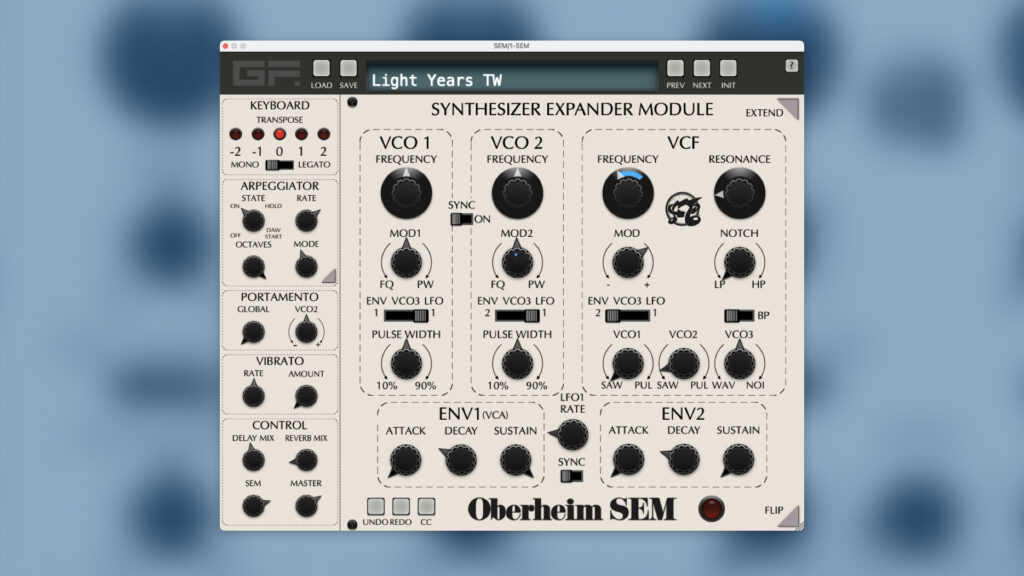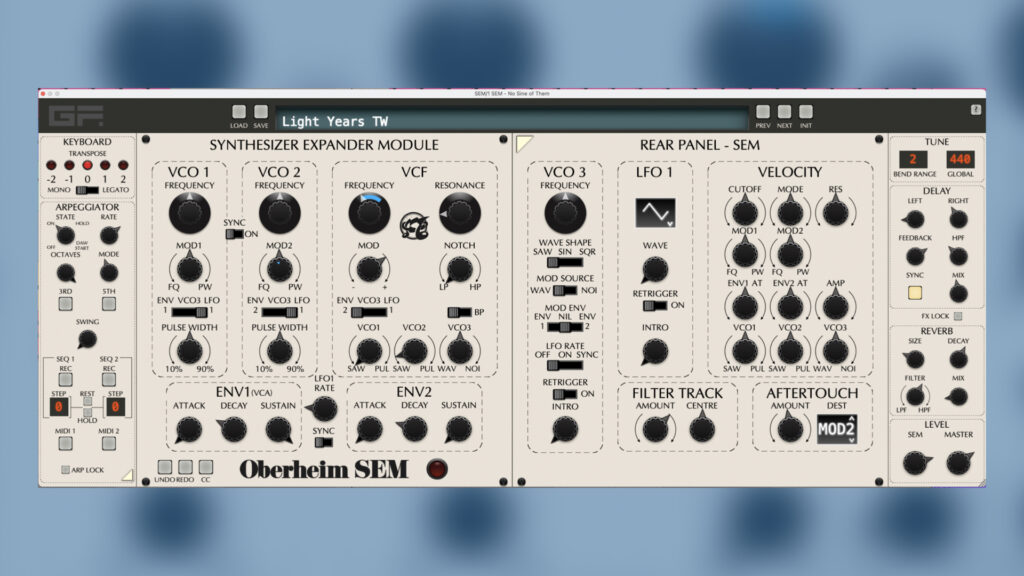Gforce Software is celebrating Tom Oberheim’s 86th birthday with an SEM emulation, Oberheim first analog Oberheim Synthesizer.
July 7th is a big day in the synth world. Exactly 86 years ago, the audio engineer and synth pioneer Tom Oberheim was born. A developer legend who has moved a lot in the electronic instruments and music world. And he still works like a young man at his 86 years. There are very few who are still active at that age. WOW, Hats off for such a passion.
From Synth Anatomy, I wish you a happy birthday and thank you for everything. The good guys of Gforce Software, who brought us big-sounding Oberheim OB-E celebrates this big day with an authentic emulation of Tom Oberheim’s first official analog Synthesizer. The Synth Expander Module also known as SEM. Here is my first look review.
Gforce Software Oberheim SEM
Gforce Software maintains the simplicity of the original SEM. You get the same easy-to-tweak user interface with two main VCOs with frequency control, sync option, manual pulse width, FM, and pulse width modulation. Both oscillators have saw and pulses that can be mixed in the filter section. The filter is also a classic soft reproduction of the iconic Oberheim state-variable filter with morphable lowpass, both and highpass.
There is also an additional bandpass mode available with a switch. Modulation side, you get two ADS envelopes as well as a single LFO. So far it sounds like a classic SEM. However, the Gforce Software developers have packed some nice add-ons.
More Features
Starting with a third oscillator that is hidden on the second page that can be used as a classic oscillator or as a low-frequency oscillator (modulator). Besides the classic saw, it gives you additional sine and square waveforms. This expands the sound spectrum of the SEM. Then, you get a versatile stereo delay with left/right time settings, feedback, sync, and a high-pass filter. There is also a big-sounding reverb with size, decay, and morphable LPF/HPF.
The delay, as well as the reverb, are of high quality. The reverb alone can generate very rich, smooth spheres. In connection with the delay, you can quickly drift your sounds into the ambient worlds.
Further, users can benefit from an advanced arpeggiator and a dual-sequencer with real-time recording. Press once and you can program notes in with rests and holds. It also has a handy export functionality allowing you to export the sequence as a MIDI file.
Dave Spiers and his team didn’t stop there. They also give the engine full velocity and aftertouch. In an extra section on the second page, the various parameters can be conveniently mapped to velocity and aftertouch.
The developers provide a large number of excellent vintage and modern sounds that beautifully showcase the character and possibilities. Especially those that show what is possible with the extra features. There are also some sound replicas of classic songs (just can’t get enough) that make you smile.
Conclusion
The Gforce software developers have also done a great job with the SEM. They kept the simplicity of the SEM by keeping it monophonic, easy-to-tweak, giving and the very round, warm sound to every DAW.
I like that they didn’t stick to the original design and have added clever additions like a third oscillator, full control over velocity and aftertouch, an arpeggiator, a double sequencer, and more. Everything that fits the synth that doesn’t distort/color the sound in other directions.
But not everything is perfect. I have some criticism. There is no option to mark favorites in the preset browser. A feature I really like when I’m making videos. Even if it’s more of a polyphonic feature, MPE support would be exciting, allowing you to modulate three parameters at the same time with a key. There are also some presets that have a good amount of effects on it and thus a global FX on/off switch would also be very useful here.
Polyphony would have been nice, but in this case, the developers want to keep it strictly authentic to the original. If you need more polyphony then you have to use the OB-E. Talking about the concurrence. I compared it quickly with the Brainworx Oberhausen or Arturia SEM V. There aren’t big differences. Personally, I like the Gforce version better. It has more assertiveness and sounds even more authentic. But it’s a very personal opinion.
All in all, the Oberheim SEM emulation by Gforce Software is an excellent sounding Synthesizer plugin. The sound has the power, the punch, and the warmth that we know from the original SEM. It’s a fun instrument with the hardware full-proof interface experience that is suited for beginners and experienced Synthesizer lovers alike.
Pro
- sound quality and authenticity
- price
- additional features (3rd oscillator, dual sequencer…)
- presets
Neutral
- OB-E vs SEM, do we need a separate SEM version because OB-E already has a mono SEM inside?
- MPE in a monophonic synth?
Contra
- no preset favorite function
- missing all FX on/off switch
Gforce Software Oberheim SEM is available now for an introductory price of £29,99 + VAT and will retail later for £49,99 VAT. It runs as a VST, VST3, AU and AAX plugin on macOS (M1 and Intel) and Windows. Existing OB-E customers can get it for £19,99 + VAT, check your user account for a coupon.
More information here: Gforce Software
Available at my partners






Be the first to comment